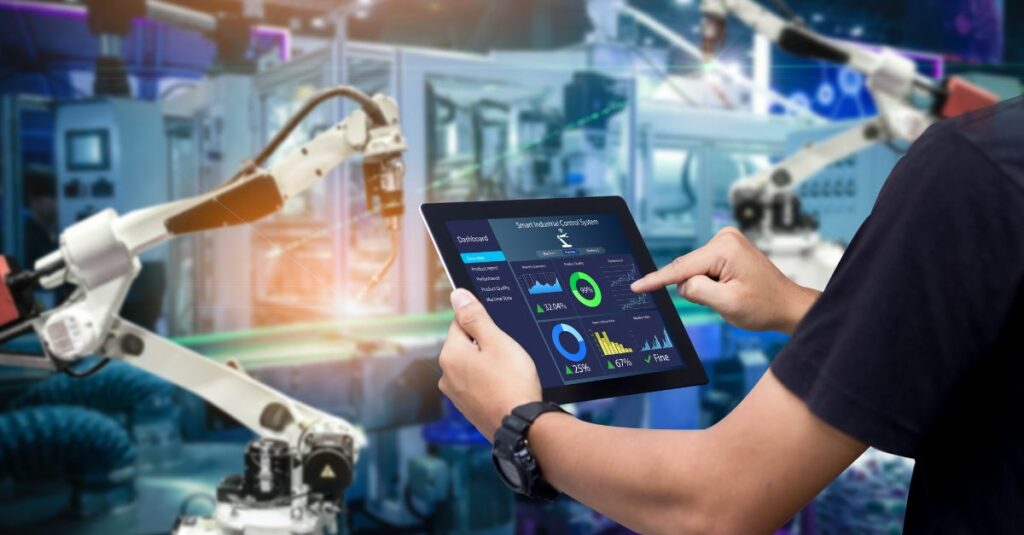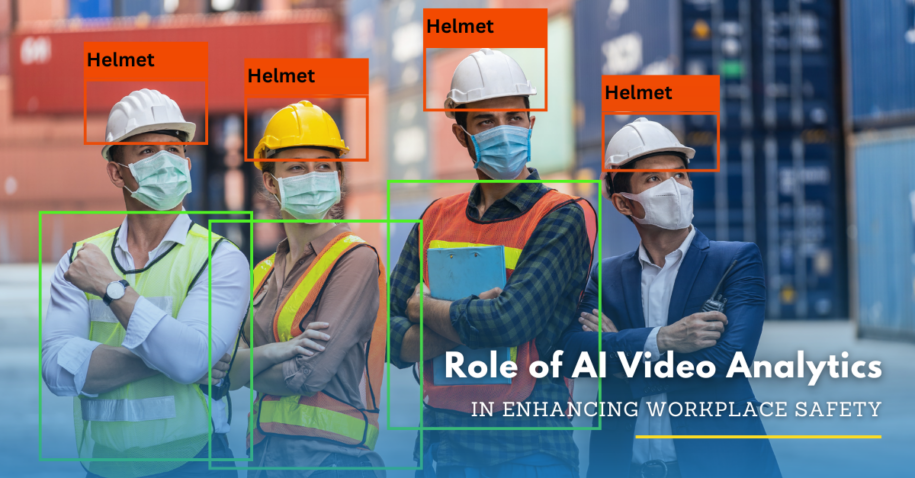The Role of AI Video Analytics in Enhancing Workplace Safety

Introduction
Overview of Workplace Safety Challenges
Workplace safety is a critical concern across industries. Many organizations struggle to maintain a safe environment. Common issues include slips, trips, falls, machinery accidents, and hazardous material exposure. According to the International Labour Organization (ILO), over 2.3 million people die annually from work-related accidents or diseases. This statistic underscores the urgent need for effective safety measures.
Introduction to AI Video Analytics
AI video analytics involves using artificial intelligence to analyze video footage in real-time or post-event. This technology enhances traditional surveillance by providing automated monitoring and sophisticated analysis capabilities. Unlike conventional systems that rely on human oversight, AI video analytics can detect and respond to potential safety threats more efficiently and accurately.

The Role of AI in Monitoring Workplace Environments
Real-Time Surveillance and Monitoring
AI video analytics enables continuous observation of workplace environments, ensuring that safety protocols are adhered to at all times. Real-time surveillance systems can automatically alert management to potential hazards, such as employees entering restricted areas or equipment malfunctions. For instance, AI-driven systems in warehouses can monitor forklift operations, alerting supervisors to unsafe driving behaviors instantly.
Behavioral Analysis and Anomaly Detection
By analyzing patterns of behavior, AI can identify unsafe actions that might go unnoticed by human observers. This includes detecting employees not wearing required safety gear or engaging in risky activities. Additionally, AI can spot unusual activities, such as unauthorized access to sensitive areas, and trigger immediate alerts for intervention.
Environmental Monitoring
AI video analytics extends beyond human behavior to monitor environmental conditions. It can detect hazards such as gas leaks, fires, and other dangerous conditions in real-time. For example, in the chemical industry, AI systems can identify the early signs of leaks or spills, allowing for swift response and containment.
Ensuring Compliance with Safety Protocols
Automated Compliance Checks
AI ensures adherence to safety regulations by continuously monitoring compliance with established protocols. Automated systems can verify that safety measures, such as wearing helmets or harnesses, are followed. Non-compliance can be flagged and reported, helping organizations maintain high safety standards.



Personal Protective Equipment (PPE) Monitoring
AI video analytics can detect whether employees are wearing the correct PPE. For instance, in construction sites, AI systems can ensure that all workers are wearing helmets and reflective vests. Case studies have shown significant reductions in injury rates when AI is used to enforce PPE compliance.
Training and Education Enhancement
AI can enhance safety training programs by providing data-driven insights into common safety violations and areas for improvement. Simulated training environments using AI can offer employees hands-on experience with real-time feedback, leading to better preparedness and understanding of safety protocols.
Preventing Accidents with Predictive Analytics
Predictive Maintenance
AI’s predictive capabilities can anticipate equipment failures before they occur, allowing for proactive maintenance. In manufacturing, AI systems can analyze data from machinery to predict breakdowns, reducing downtime and preventing accidents caused by equipment malfunctions.
Incident Prediction and Prevention
AI analyzes historical data to identify patterns that precede accidents, enabling organizations to take preventive measures. For example, if data shows that certain activities or times of day are more accident-prone, additional safety measures can be implemented during those periods.
Industry-Specific Applications
Construction Industry
In construction, AI video analytics monitors high-risk activities such as scaffolding work and heavy machinery operation. Case studies demonstrate how AI has prevented falls and other accidents by providing real-time alerts and ensuring compliance with safety protocols.
Manufacturing Industry
AI enhances safety on assembly lines by monitoring equipment and worker interactions. Examples include systems that shut down machinery if an employee gets too close, preventing injuries and ensuring smooth operations.
Healthcare Industry
AI applications in healthcare focus on ensuring both patient and staff safety. This includes monitoring hygiene practices, such as handwashing, and identifying potential hazards like wet floors or obstructed pathways in hospitals and clinics.
Oil and Gas Industry
AI monitors hazardous operations in the oil and gas industry, detecting leaks, fires, and other dangers. Case studies from offshore platforms highlight how AI has been instrumental in preventing major accidents and ensuring worker safety.




Technological Integration and Challenges
Integration with Existing Systems
AI video analytics can be seamlessly incorporated into existing safety systems, enhancing their capabilities. Successful integrations often involve combining AI with traditional surveillance and monitoring tools to provide a comprehensive safety solution.
Data Privacy and Ethical Considerations
Ensuring employee privacy is a significant concern with AI surveillance. Organizations must implement strict data privacy policies and address ethical concerns to maintain trust and comply with regulations.
Cost-Benefit Analysis
The financial implications of implementing AI video analytics can be substantial, but the return on investment (ROI) often justifies the cost. Case studies show that AI not only reduces accidents and associated costs but also improves overall operational efficiency.
The Future of AI Video Analytics in Workplace Safety
Advancements in AI Technology
Emerging technologies, such as machine learning and advanced sensors, will continue to enhance AI video analytics capabilities. Future innovations may include even more accurate predictive models and improved real-time monitoring systems.
Potential for AI-Driven Safety Cultures
AI can foster a culture of safety by continuously promoting and enforcing safe practices. Over time, this leads to long-term benefits, such as reduced accident rates, improved employee morale, and a stronger safety record.

Conclusion
Summary of Key Points
AI video analytics plays a crucial role in enhancing workplace safety by providing real-time surveillance, ensuring compliance with safety protocols, and preventing accidents through predictive analytics. The technology’s applications across various industries demonstrate its versatility and effectiveness.
Frequently Asked Questions (FAQs)
AI video analytics is the use of artificial intelligence to analyze video footage for detecting and responding to potential safety threats.
By providing real-time monitoring, ensuring compliance with safety protocols, and predicting accidents before they occur.
Yes, AI can enhance existing systems by providing additional monitoring and analytical capabilities.
Industries such as construction, manufacturing, healthcare, and oil and gas benefit significantly from AI video analytics.
Yes, organizations must implement strict data privacy policies to address ethical concerns and maintain employee trust.
Costs vary, but the return on investment often justifies the expense due to reduced accidents and improved efficiency.
AI can be highly accurate in predicting accidents by analyzing historical data and identifying patterns.

